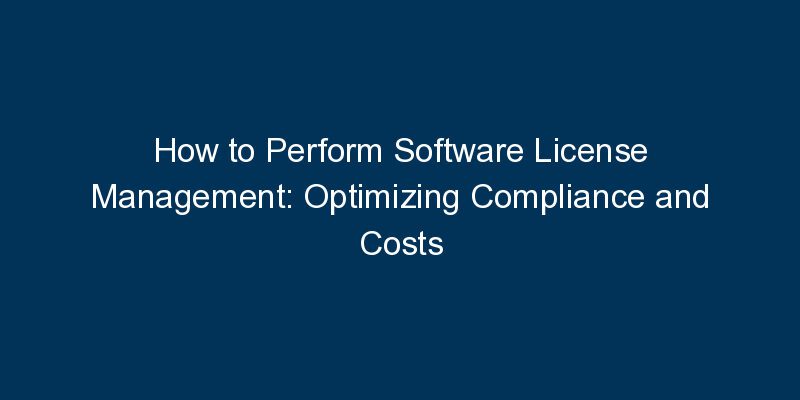Efficient software license management is crucial for organizations to ensure compliance, reduce legal risks, and optimize costs. This blog provides a comprehensive guide on how to perform software license management, empowering businesses to maintain a transparent and cost-effective software environment.
Introduction:
Software licenses are integral to the IT infrastructure of organizations, and managing them effectively is essential for legal compliance and cost optimization. This guide explores the key steps involved in performing software license management, helping organizations maintain control over their software assets.
Key Steps to Perform Software License Management:
- Inventory and Audit Software Assets: Conduct a comprehensive inventory of all software assets within the organization. Perform regular audits to ensure accuracy and identify any unauthorized or unlicensed software.
- Understand License Agreements: Thoroughly understand the terms and conditions of software license agreements. Different software vendors may have varying licensing models, and compliance hinges on a clear understanding of these terms.
- Centralized License Database: Maintain a centralized database for tracking software licenses. This database should include details such as license keys, expiration dates, renewal terms, and the number of licenses owned and in use.
- Automated License Management Tools: Utilize automated license management tools to streamline tracking and compliance. These tools can provide real-time insights into license usage, alert on potential compliance issues, and facilitate license optimization.
- Regular Compliance Audits: Conduct regular compliance audits to ensure adherence to license agreements. This proactive approach helps identify and rectify issues before they escalate into legal or financial consequences.
- Optimization Strategies: Implement optimization strategies to avoid over-licensing or under-licensing. This may involve re-harvesting unused licenses, negotiating with vendors for better terms, or exploring alternative licensing models.
Conclusion:
Performing software license management is a strategic practice that ensures organizations remain compliant, minimize legal risks, and optimize software costs. By following the steps outlined in this guide, businesses can establish effective license management practices and maintain control over their software assets.






















Comments